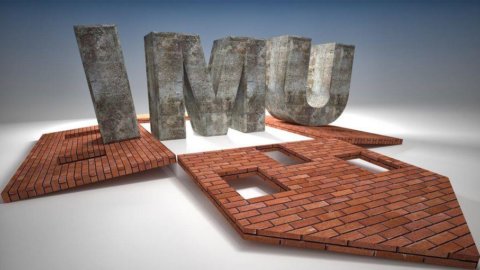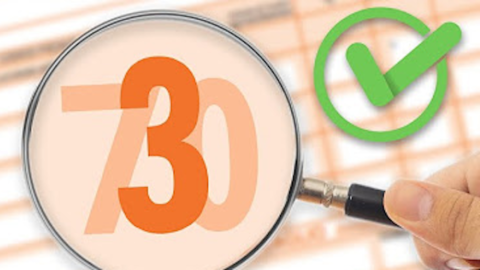Memo Imu. In a period of feverish calculations for the Tasi, thousands of Italian taxpayers must bear in mind that the time to deal with the single municipal tax is also approaching. It is no longer a question of cashing in a 2012-style sting, but there are plenty of rules to remember. Here are the answers to some basic questions.
1) WHEN IS THE DEADLINE?
After the deposit paid by 16 June, it will be necessary to put your wallet back in order to pay the balance by 16 December (the same deadline also applies to the balance of the Tasi).
2) WHO HAS TO PAY THE 2014 IMU?
The Imu is paid on the first home only if the property is luxury, or if it falls into the cadastral categories A/1 (stately type homes), A/8 (villas) or A/9 (castles and palaces "of eminent artistic or historical merits"). In these cases you can take advantage of a reduced rate decided by the Municipality and a deduction of 200 euros (no further discount linked to children).
The tax is also due on all properties other than the first home, including buildings, building areas, agricultural land, rural buildings for residential use and buildings instrumental to professional or business activity. Payment is obligatory for the owner who has a real right of enjoyment (usufruct, use, residence, lease, surface), for the concessionaire in the case of state concessions and for the spouse to whom the property has been assigned following a separation or divorce.
3) WHO IS EXEMPT FROM PAYMENT?
The main novelty is that starting from this year the Imu exemption will be triggered on first houses and related appliances (unless, as mentioned, the property is not a luxury one). It is good to remember that the concept of first home concerns the possession of the property: you can buy a home as a first home even while maintaining your residence elsewhere, as long as it is in the same Municipality, but if the domicile does not coincide with the residence, the exemption is valid only for one of the two properties.
The tax is also not due on another series of properties: those of undivided ownership housing cooperatives used as the main residence by the assignee members; social housing; the only (non-leased) property owned by military or law enforcement personnel; the marital home entrusted to the former spouse; instrumental rural buildings; buildings intended exclusively for scientific research.
Furthermore, the Municipalities can approve the exemption for three other categories of real estate: homes whose property or usufruct is owned by the elderly or disabled who reside in long-term care institutions (provided that the house is not rented); single (unleased) property owned by Italian citizens not resident in Italy; real estate units granted on loan to children or parents as a main residence. In the latter case, the exemption on the first home is valid if the cadastral income does not exceed 500 euros or (without any limit) if the beneficiary of the loan has an Isee income of up to 15 thousand euros per year.
4) THOSE WHO LIVE IN RENT HAVE TO PAY THE IMU?
No. Only the landlord pays the Imu: the tenant must pay only a part of the Tasi (the amount is established by the Municipality in a range between 10 and 30%).
5) HOW IS THE TAXABLE BASE CALCULATED?
It is the same used for the Tasi: to obtain it it is necessary to re-evaluate the cadastral income of 5% and multiply it by the relative coefficients, for example 160 for the main houses and the relative appurtenances. Here is the list of coefficients according to the cadastral categories:
– 160 for buildings classified in the cadastral group A, with the exclusion of the cadastral category A/10 and in the cadastral categories C/2, C/6 and C/7;
– 140 for buildings classified in cadastral group B, and in categories C/3, C/4 and C/5 (craft workshops, gyms (non-profit), bathing establishments);
– 80 for buildings classified in category D/5 (credit institutions, exchange, insurance);
– 80 for buildings classified in the cadastral category A/10 (offices and private studios);
– 65 for buildings classified in cadastral group D (sheds, hotels, cinemas, etc.), with the exception of properties classified in category D/5, for which, as mentioned, the multiplier is 80;
– 55 for buildings classified in category C/1 (shops).
6) WHAT ARE THE RATES?
The maximum rate is 10,6 per thousand, but the final decision rests with the Municipalities. To find out the precise quota to apply, refer to the municipal resolutions published on the Treasury website by 28 October. In the absence of publication, the thresholds of last year are valid. If, on the other hand, the Municipality decides to raise the rate, the adjustment to the advance must also be paid with the balance: the total to be paid with the second installment, therefore, corresponds to the IMU calculated for the whole of 2014 with the rate municipal minus the amount of the first installment paid in June.
Furthermore, the Imu rate is linked to that of the Tasi on buildings other than the main residence. In fact, their sum cannot exceed 10,6 per thousand, a threshold which also corresponds to the maximum rate of the single municipal tax. Consequently, in the Municipalities where the administration has pushed the IMU to the highest possible level, no service tax is paid a single euro. On the other hand, if the IMU rate is established at 10,2 per thousand, that of the Tasi cannot exceed 0,4 per thousand. Municipalities, however, can impose a maximum increase of 0,8 per thousand on the Tasi rate (provided they allocate the additional revenue to deductions), thus raising the ceiling of the sum of the Imu and Tasi rates to 11,4 per thousand. one thousand.
7) INSTRUMENTAL PROPERTY: IS IMU DEDUCTIBLE?
Yes. The Imu due on properties used exclusively for professional or commercial business purposes is deductible from Ires and Irap to the extent of 20%. No deduction, however, for properties for mixed use.
8) HOW DOES THE IMU FOR AGRICULTURAL LAND WORK?
For agricultural land, the tax base is calculated by revaluing the land registry income by 25% on 1 January 2014 and then multiplying the result by a coefficient: 75 in the case of land owned and managed by direct farmers and professional agricultural entrepreneurs registered in the agricultural welfare; 135 in the other cases. The IMU rate for agricultural land is the basic rate of 7,6 per thousand. Municipalities can increase or decrease it by a quota not higher than 3 per thousand.
Agricultural land owned and managed by direct farmers or by professional agricultural entrepreneurs is subject to Imu only for the part of the value exceeding 6 thousand euros, with the following reductions:
– 70% of the tax on the portion of value exceeding 6 euros and up to 15.500 euros;
– 50% of the tax on the portion of value exceeding 15.500 euros and up to 25.500 euros;
– 25% of the tax on the portion of value exceeding 25.500 euros and up to 32 thousand euros.
9) IN WHICH CASES IS THE TAXABLE BASE REDUCED BY 50%?
In two cases:
– for buildings of historical or artistic interest;
– for unusable or uninhabitable buildings. The condition of the building must be ascertained by the municipal technical office through an appraisal paid by the owner of the building or through a substitutive declaration.
10) WHICH TAX CODE TO INDICATE IN THE F24?
Here is the scheme:
– for the main house and related appurtenances 3912;
– for rural buildings for instrumental use 3913;
– for land (Municipality) 3914;
– for land (State) 3915;
– for building areas (Municipality) 3916;
– for building areas (State) 3917;
– for other buildings (Municipality) 3918;
– for other buildings (State) 3919;
– for interest from assessment (Municipality) 3923;
– for assessment sanctions (Municipality) 3924;
– for buildings for productive use classified in cadastral group D (State) 3925;
– for buildings for productive use classified in cadastral group D (municipality increase) 3930.
Attachments: Read also: "The Tasi in 10 points: from rates to deductions, from rents to F24"





